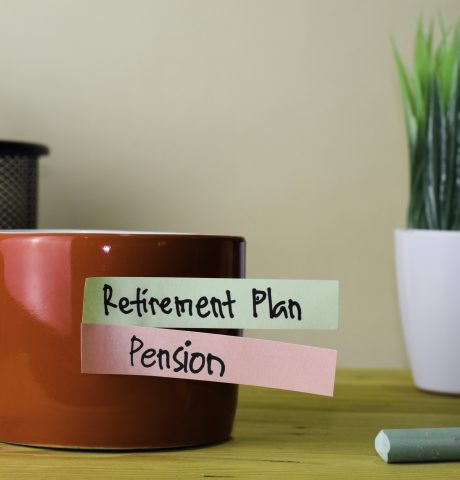This is a scary time for investors, especially those who are new or soon-to-be retirees. The COVID-19 economy is still in full swing. We’ve seen markets crater, rally, tumble again only to rally again. The stock market has been unsettled, to say the least.
But the pandemic is also impacting another retirement income stream — pensions. Clients I’ve worked with for years have come to me with the same situation and the same question. Their company is offering (or pushing) early retirement. Employees are being asked if they would consider taking a lump-sum payout in place of a lifetime of monthly pension payments.
Companies are increasingly presenting pension buyouts (a large, one-time payout) to reduce their future pension obligations. The long view for businesses is that the weight of pension plans on their financials will be reduced. They make the payment buyout to the retiree, and they’re done. And in these times, companies are looking to lessen their financial loads any way they can.
There is no easy, one-size-fits-all answer for whether to accept a lump-sum pension payment. Everyone’s situation will be different based on what’s on the table. There is even more pressure for those workers who are being pressed to retire ahead of their timetable.
So, how do you choose between a cash offer, which is typically rolled over into an IRA, or monthly payments? As a general guide, you can use the 6% Rule when evaluating the two options. It’s a straightforward tool to help assess which choice makes more financial sense over time.
Here’s how the 6% Rule works: If your monthly pension offer is 6% or more of the lump sum, it might make sense to go with the guaranteed pension. If the number is less than 6%, you could do as well (or better) by choosing the lump sum and investing it. Then, you would pay yourself each year, which is akin to your own personal pension that you control.
Keep in mind that a pension, in essence, pays you back your own money. You can withdraw 5% per year from any lump sum, even if the funds are earning nothing. Conservatively speaking, your money should last 20 years (5% x 20 = 100% withdrawal). Twenty years is a long time, especially if you’re around age 65. What’s more, it’s unlikely that you’ll make 0% for those two decades as an investor, so your money should stretch further.
Let’s walk through the math of the 6% Rule.
To calculate your percentage, take your monthly pension amount and multiply it by 12, then divide that total by the lump sum.
Consider the following scenario. Your pension is $1,000 per month for life or a $160,000 buyout. Do the math ($1,000 x 12 = $12,000/$160,000), and you get 7.5%. In this example, taking the monthly amount seems like a better deal (7.5% is greater than 6%). Earning 7.5% per year consistently and indefinitely is a tall order and one you’re not likely to meet.
Now, consider this situation. Your pension is $708 a month for life versus $170,000 today. Run the numbers ($708 x 12 = $8,496/$170,000) and you get just shy of 5%. So, the monthly pension paycheck in this scenario offers you a return of about 5% for life. Remember from above that you could do the same, earning 0% interest, for 20 years without running out of money.
But what if you made even a modest return of 2%? You’d then be ahead of what the monthly pension would pay out. In this example, our 5% number is less than our benchmark of 6%, so you’d probably be better served to take the lump-sum cash payment of $170,000.
The 6% Rule, while powerful and telling, isn’t the only consideration retirees need to factor into their decision. Here are a few other concerns:
1. Your age to begin a monthly pension versus the lump sum.
If you’re retiring much earlier than you’ve planned and your pension won’t kick in for a few years or more, look at your portfolio. Can you live off of other resources until you reach “pension age,” or do you need the money now?
2. The likelihood that you’ll need a “lump sum” for a future emergency.
Do you have an emergency fund built into your assets with other accounts or resources? Look at the lump-sum offer in the context of your entire financial picture.
3. Your projected longevity.
Of course, the longer you live, the more valuable the monthly pension is worth. On the flip side, a lump sum is fully in your control should you want to include that amount in your estate planning.
4. The type of pension payout you elect.
Is your pension benefit based on your life only or are there provisions for a surviving spouse? Is there a “period certain” option that pays plan beneficiaries for a time even if you pass away soon after taking the monthly pension? Consider the full spectrum of the plan.
5. The solvency of the company paying the pension for 20-plus years.
Does the Pension Benefit Guaranty Corporation (PBGC) insure your pension payments if your former employer goes out of business?
Whether to take a lump-sum buyout of your pension or the guaranteed monthly benefit is a highly individual decision. If you find yourself faced with this difficult decision, run through the 6% Rule, and see where you land. Beyond the math, think of other variables that may impact your choice and give them weight, too.
Read the original AJC article here.
Related Video:
Disclosure: This information is provided to you as a resource for informational purposes only. It is being presented without consideration of the investment objectives, risk tolerance or financial circumstances of any specific investor and might not be suitable for all investors. Past performance is not indicative of future results. Investing involves risk including the possible loss of principal. This information is not intended to, and should not, form a primary basis for any investment decision that you may make. The information contained in this piece is not considered investment advice or recommendation or an endorsement of any particular security. Further, the mention of any specific security is solely provided as an example for informational purposes only and should not be construed as a recommendation to buy or sell. Always consult your own legal, tax or investment advisor before making any investment/tax/estate/financial planning considerations or decisions.










